Subjects:
- Preface
- Control of an actuator by a relay, transistor and FET
- Control of an actuator by an ECU
Preface:
In modern motor vehicles, there are dozens of control devices responsible for the operation of both the combustion and electric motors, as well as comfort and safety functions. These control devices are equipped with software that processes the signals from sensors and uses this to determine which actuators need to be controlled. On the page "Interface circuits” delves deeper into the process in which the input and output signals are processed by the ECU (control unit).
In the next image we see the engine management ECU in the middle, with the sensors on the left and the actuators on the right.
- Sensors send a low current voltage to the ECU. The level of the voltage (ranging from 0 to 5 or 14 volts), the frequency (speed) or the pulse width of a PWM signal provides the ECU with input about the measured value of the sensor.
- With actuators it is more about the current than the voltage. Although a voltage is required to generate current, the actuator will not function without this current.
On the page "Sensor types and signals” the input signals from the sensor to the ECU are discussed in more detail. This page highlights the control of actuators.
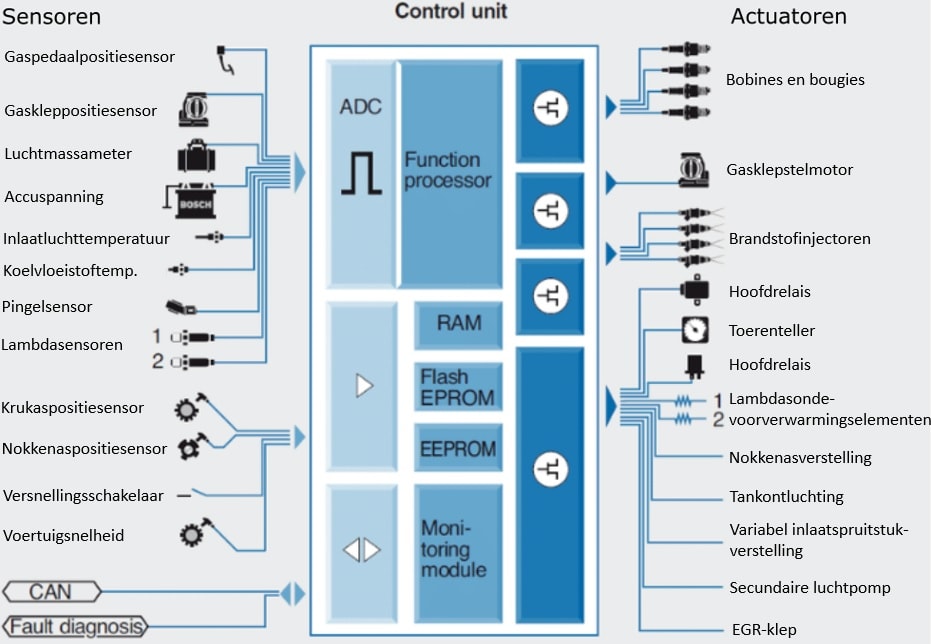
Controlling an actuator by a relay, transistor and FET:
The actuator is switched on and off by the ECU. In the ECU it is done by means of a transistor or a FET an electrical connection is made or broken.
The driving principle of a transistor is equal to one relay: both components are controlled with a control current to make them conductive. The operation of a transistor differs from a relay: there are no moving parts in the transistor. The transistor switches with an electron current.
In the three images below we see one relay circuit with a lamp.
- Relay switched off: no control current flows. The coil is not magnetic, so the switch in the main current side is open. There is also no main current running. The lamp is turned off;
- Relay switched on: the relay coil receives a supply voltage and is connected to ground. A control current flows and the coil consumes the supply voltage to become magnetic. As a result of the magnetic field, the switch in the main power section is closed. A main current starts flowing and the lamp lights up;
- Situation sketch of control current through the coil and main current through the lamp.
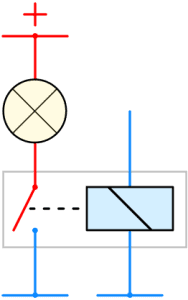
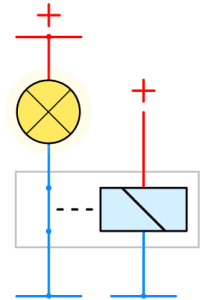
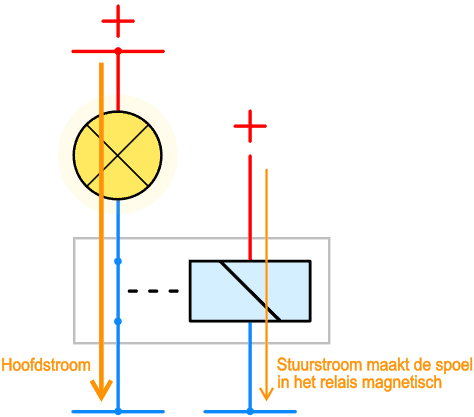
In an ECU, transistors and/or FETs are switched on and off. In the next three images we see a transistor circuit with a lamp as a consumer. The transistor is of the NPN type.
- Transistor not conducting: there is no supply voltage at the base connection of the transistor. No control current flows, so the transistor does not switch the main current;
- Transistor in conduction: a supply voltage is applied to the basic connection. A control current flows via the base and emitter to ground. The transistor starts conducting, connecting the ground connection of the lamp to the ground of the circuit. A main current starts flowing and the lamp turns on;
- Situation sketch of the control current through the transistor and the main current through the lamp.
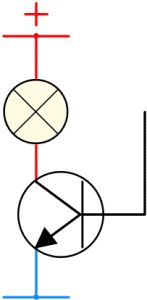
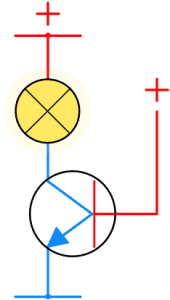
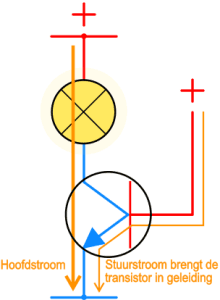
We increasingly see FETs being used in the ECU. The abbreviation FET stands for: “Field Effect Transistor”. The main difference between a FET and a transistor is that a FET is turned on with a voltage, while a transistor requires a driving current. The moment the FET is made conductive, an electron flow starts. The electron flow runs from minus to plus (actual current direction).
- FET not conducting. The gate is not provided with a control voltage;
- FET in conduction: a control voltage is applied to the gate. The FET starts conducting, causing a main current to flow through the lamp;
- Situation sketch in which we see the direction of the electron flow (from minus to plus) through the FET.
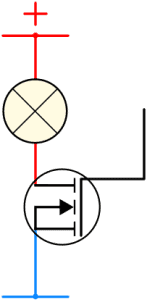
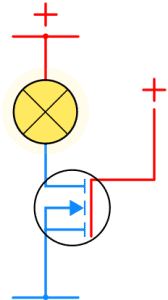
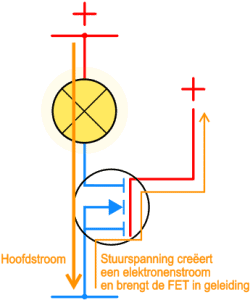
The operation of the transistor and FET are described on separate pages. On this page we focus exclusively on the switching principles of actuators.
Controlling an actuator by an ECU:
The transistor and FET are located in the printed circuit board of the ECU, but sometimes also incorporated in actuators. In this section we will take a closer look at the ECU circuits for four different types of actuators. In the image we see two passive actuators with their own plus and a ground circuit via the ECU.
Passive actuators are - in most cases - equipped with a coil, which has its own supply voltage and is switched to ground by the ECU. A passive actuator may have a position sensor, but this is often also passive (an external) potentiometer), and is processed via a separate signal wire in another part of the ECU.
When the current through the actuator is sent directly through the transistor in the ECU, this is called a power transistor. A passive actuator can also be controlled via a FET.
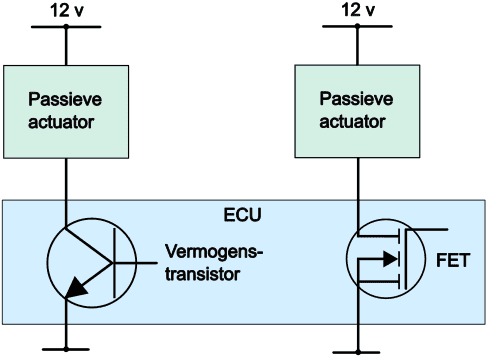
The images below show examples of how passive actuators are controlled.
1. Ignition coil control: with an ignition coil without internal drivers, the primary current from the ignition coil is switched to ground by the ECU. The figure shows the power transistor in the ECU (2), designed as Darlington circuit to provide a larger gain factor, which switches the primary coil of the ignition coil (3) to ground to charge the primary coil. The secondary coil is connected to the spark plug side (4).
2. Electric motor control: using a H-bridge An electric motor with carbon brushes can rotate in two directions. The H-bridge can be constructed with transistors or FETs as shown. The electric motor is equipped with a potentiometer to feed the position back to the ECU. The applications can include: electric motor for the heater valve, EGR valve, mirror glass, seat adjustment, gas valve. In the latter case it becomes a double potentiometer applied for safety. The H-bridge is usually an IC that is installed in the printed circuit board of the ECU.
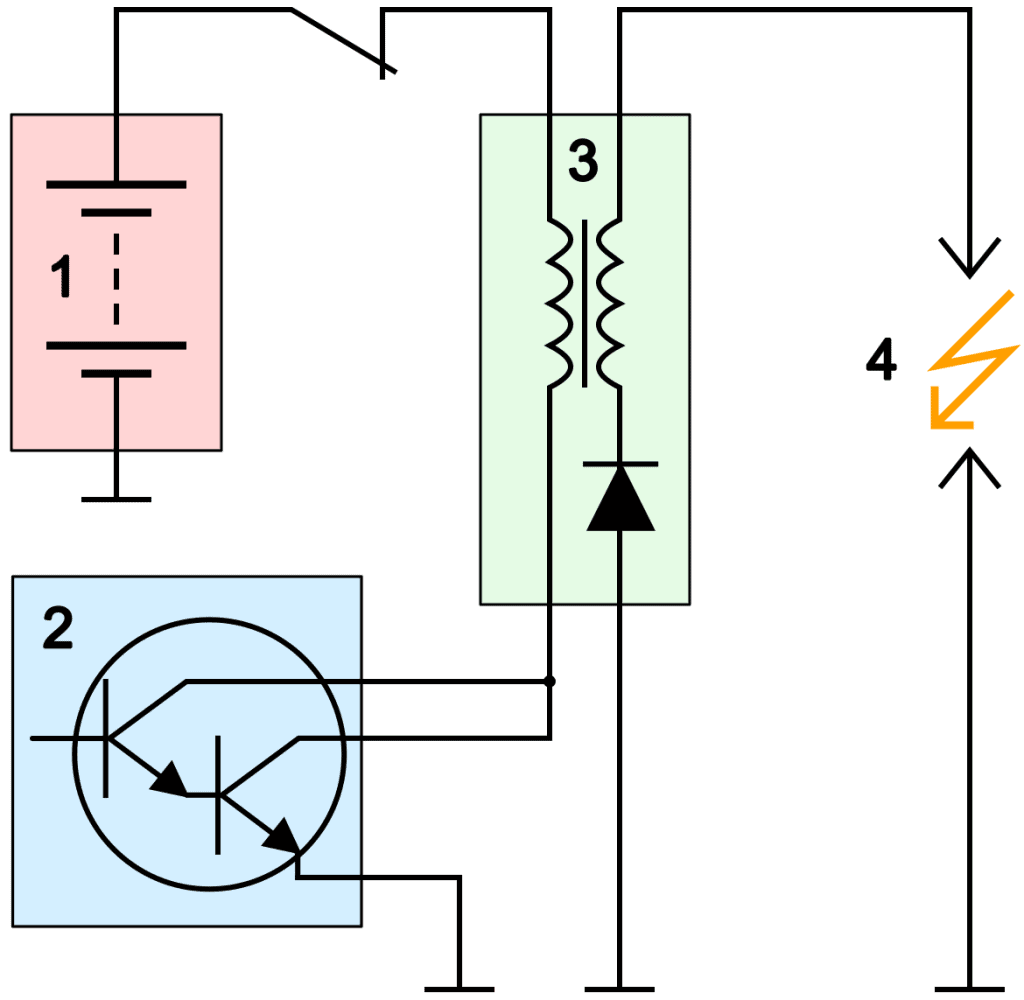
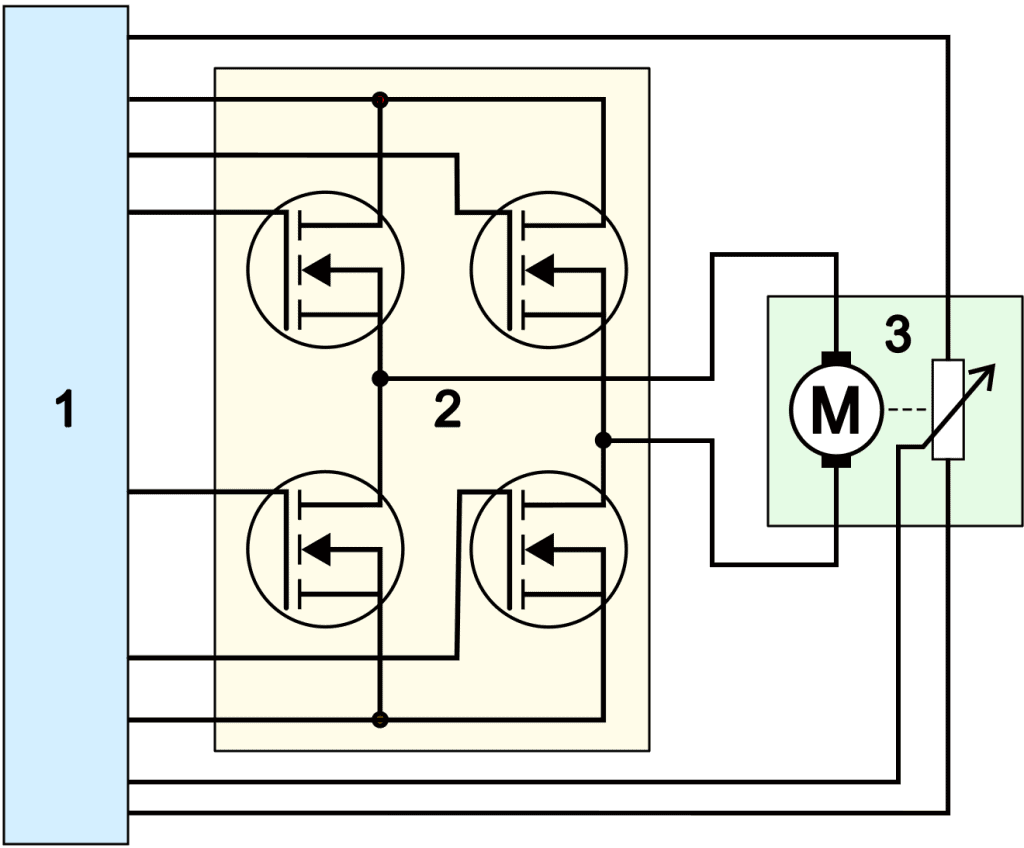
On the page H-bridge examples of the different versions of the H-bridge with transistors and FETs are described.
In addition to passive actuators, we also come across active and intelligent actuators. In the image below we see the circuit of these types.
With active and intelligent actuators, the ECU switches the current indirectly through the actuator. The transistor in the ECU is relatively lightweight, as the current it will pass through will be zero.
- Active actuator: the power transistor is now not in the ECU, but in the actuator itself. An example of this is an ignition coil (a pin ignition coil, or DIS ignition coil with internal drivers). The active actuator in this case is the driver. The actuator receives a constant power supply and a constant ground, and the signal transistor in the ECU switches the power transistor on or off with a logic 1 or 0 (5 volts or 0 volts);
- Intelligent actuator: the actuator is equipped with its own ECU with a switching transistor. Communication takes place between both (or more) ECUs via the LIN bus, whereby digital signals are exchanged. An example of an intelligent actuator is a windshield wiper motor. Through the LIN bus communication, data such as: the current position of the windshield wiper arms, speed and movement to the zero position can be exchanged.

